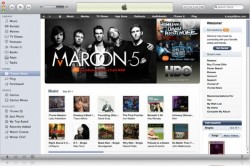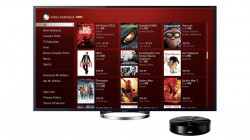Weekly News Roundup (5 January 2014)
Happy New Year and welcome to 2014! Another quiet week, for obvious and alcohol related reasons. Still a slow news week, but it’s starting to slowly trickle in as people shake off their NYE induced hangovers and contemplate the unwelcoming thought of a return to full time work.
Urgh … here we go again.
![]()

iTunes, Netflix, Spotify … just some of the digital services that helped the UK music industry records its first revenue growth five years
Who’d have thunk it? Giving consumers what they want actually helps you make more money. Providing partial proof that the piracy epidemic has more to do with unmet user demand than a sudden surge in the number of dirty stinking no-good thieves, the latest home entertainment results (for movies, music and gaming) proves that the digital transition is real and profitable. With physical sales declining by 6.8%, 7.6% and 2.9% for the movie, music and game sales in the UK, the rise in digital downloads and streaming has not only helped to offset these declines, but also helped the industry to post its first rise in revenue in over five years.
Music streaming was up 33.7%, with Spotify alone now accounting for 10% of all UK music revenue. Digital video downloads and streaming rose by 40.2%, and digital game sales exceeded physical sales for the first time ever after posting a 16.4% increase.
So while physical sales were still 56% of all sales, the shift to digital is clearly happening and happening quickly. Perhaps it didn’t happen quickly enough, hence the troubles of the last five years. All transitions are difficult, and it appears this one isn’t any different, with digital piracy now looking more and more like the effect to the cause of the industry as a whole not responding to the changing market quickly enough.
![]()

Sony’s 4K stuff, pictured here, may support Google’s VP9 as the 4K codec of choice, along with LG and Panasonic
Just when the WebM vs H.264 war was concluded by an act of “kindness” by Cisco, a new codec war has started between, well, pretty much the same people behind the previous one. Google is now pushing its WebM/VP9 codec for 4K streaming on YouTube, and has signed up an impressive list of hardware and software partners for the codec, including ARM, Intel, LG, Nvidia, Samsung, LG, Panasonic and Sony, the latter three will be demonstrating Google’s tech at CES (Google has clearly learned the lessons from its participation in the WebM vs H.264 tussle, with WebM’s lack of hardware support seen as a key factor in the industry’s hesitance to embrace the format). This then puts the open source VP9 head to head with HEVC, or H.265, which was recently selected by Netflix as its 4K codec of choice.
But unlike a disc based format war, this is one war that may never yield a winner. Or a loser. It’s not inconceivable for all of the previously listed companies to support both HEVC and VP9, and even Google/YouTube has signaled that they’re not ruling out HEVC for future 4K use. And were this to happen, then everyone can be happy-ish, with open-source advocates like Mozilla happily using VP9, while others may prefer HEVC.
And if it’s done right (ie. with hardware and software support available freely for both codecs), users will not even have to care, just like they don’t care that the Blu-ray standard includes two different video codecs, H.264 and VC-1.
That’s that for the week. Not much, but things are ramping up, especially with CES just around the corner. See you next week.
